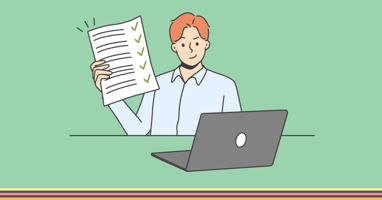Alex discusses how tagged PDF can be beneficial in making document more accessible to everyone.
How AI is changing document accessibility (and why human expertise still matters)
How AI Is Changing Document Accessibility (and Why Human Expertise Still Matters)
Summary
Artificial intelligence is making big strides in document accessibility, but it can’t replace the value of human judgement. This blog explores how AI supports accessible document creation and why expert remediation is still essential for compliance and usability.
__________________________________________
The rapid growth of artificial intelligence has changed how organisations manage their digital content. From auto-tagging PDFs to checking contrast ratios, AI-powered tools now promise faster and more efficient accessibility processes.
But while AI is helpful, it is not foolproof. Automated tools often miss key accessibility issues, particularly when it comes to real-world usage and the diverse needs of users with disability. That’s why human expertise remains vital — especially for organisations that want to be fully compliant and genuinely inclusive.
At Meet Aandi, we embrace the best of both. We use smart technology to assist our process, but we rely on trained accessibility professionals to ensure the final result is accurate, meaningful and standards-compliant.
What can AI do well?
Artificial intelligence offers useful efficiencies in document accessibility:
-
Auto-tagging PDFs with basic structure
-
Identifying colour contrast issues
-
Detecting untagged images or headings
-
Highlighting some keyboard navigation gaps
These tools are especially useful for large-scale document reviews, giving teams a quick snapshot of potential barriers. They help streamline the initial steps in remediation and reduce manual effort on repetitive tasks.
For teams with limited time or budget, this is a significant advantage. But it’s not the whole solution.
Where AI falls short
AI works best when dealing with patterns and rules. But accessibility is not only about rules — it’s about user experience. Screen reader users, people with cognitive disability, and those with low vision interact with content in ways that require context, nuance and flexibility.
For example:
-
AI might add alt text like “image” or “graphic” without describing what it shows
-
Tables may be tagged incorrectly, making data unreadable
-
Reading order could follow layout instead of logic, leading to confusion
-
Decorative images may be incorrectly announced by screen readers
-
Language complexity or cognitive overload is not usually flagged by machines
-
The overall design of the document may also be inaccessible in regards to text running over spreads or tables being created that are more complex than they need to be.
These issues can make a document technically pass a checker, but still be difficult or frustrating for users.
Why human expertise is still essential
Experienced accessibility professionals understand how people actually use assistive technologies. They consider more than just code — they focus on meaning, context and usability.
At Meet Aandi, we manually test documents using screen readers, check reading order visually and with tools, and write alt text that is appropriate for each image. We understand WCAG and PDF/UA standards and know how to apply them in real-world settings.
Our team also considers how different audiences engage with documents whether they’re neurodivergent, blind, elderly, english as a second language or have low literacy.
By combining AI with human insight, we ensure your documents are not just compliant, but accessible in the truest sense.
Meet Aandi: Balancing tech with care
We know time and budget matter. That’s why we use AI where it makes sense and people where it counts. Our services are designed for Australian organisations who want to do accessibility properly.
Whether you’re creating accessible reports, forms or manuals, we can help you achieve reliable outcomes. Let’s make your documents readable, navigable and inclusive for all.





